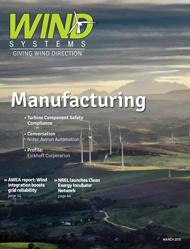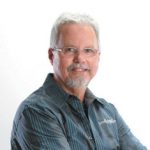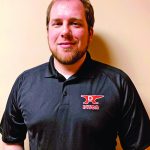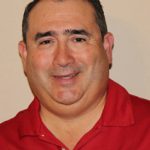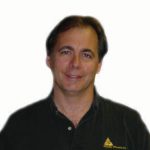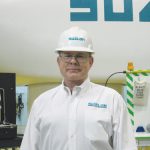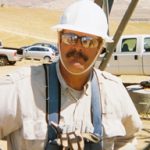Could you tell our readers about Nidec Avtron’s encoders for the wind energy industry?
Nidec Avtron manufactures a full line of encoders, including incremental and magnetic encoders, incremental and absolute. Our encoders are used on several applications in wind turbines, including the slip ring, blade pitch, and generator controls.
What are some important trends regarding encoders for the wind industry?
The biggest trend we see in the wind market is the end-user push for higher reliability and uptime. OEMs struggle with the cost balance between long-term reliability and the need to keep equipment costs down. End-users don’t have that balance: they own the equipment, they want it to last forever, and they want zero downtime. So end-users are retrofitting OEM equipment, solving longer-term reliability problems. And end-users are becoming more forceful with the wind turbine manufacturers, pushing higher-reliability components to solve pain points.
Another big trend is diagnostics. Formerly, 99 percent of all the encoders sold in the wind industry used to be “black boxes” — you couldn’t tell if they were working. This led to a lot of unnecessary part swapping. Is it the encoder failing? The coupling? The wiring? The drive or PLC input card? No one could tell. So Nidec Avtron has added diagnostics and a few competitors have tried to follow. Predictive diagnostics are key knowing that the device is working well, or if it is drifting toward a bad condition. With this knowledge, you save a huge amount of in-tower time. You don’t replace working encoders, and you can replace units that could fail, before they actually fail. You get to replace things on scheduled maintenance time, not by the encoder failing and causing downtime on your turbines.
You also want your diagnostics simply — a relay contact and visible LED output so the technician can tell at a glance if the encoder is working well or needs replacement. Some people tried sophisticated diagnostics where you had to hook up a laptop, communicate with the encoder — it’s just not practical. Climb a 70 meter-tower, climb out on top, go forward down into the front nose assembly, and then you realize, hey, this isn’t a place where I want to try to lug a laptop and some specialized cable. I just want to know if the encoder is good now, or is it threatening to fail? An LED does that, and a remote contact does that from the ground before you climb the tower.
How long has Nidec Avtron been serving the wind energy industry?
We’ve been selling to the wind energy market for over ten years. We sell globally, to OEMs and end users in Asia, Europe, and North America. We only sell components into the wind turbines themselves — we don’t supply anything for the ground-based equipment/converters.
Please talk briefly about the support and service that Nidec Avtron offers its customers and end users.
Service and support are critical because wind turbines run 24/7/365. So our free technical support is available 24/7/365. The caller talks to real engineers, not a telephone call center. We back all Avtron encoders with long no-hassle warranties because we know they can withstand the wind turbine conditions. We have field service engineers that can fly to your location, diagnose problems and help with long-term solutions. They know encoders.
What is it that is unique about Nidec Avtron and its encoders that stands out to customers.
Nidec Avtron has over 40 years experience designing encoders for heavy-duty markets. Many encoder OEMs showed up to the wind business with their machine-tool grade encoders and assumed all would work out fine, but it didn’t. Machine tool encoders get good treatment — they don’t have heavy vibration, they don’t see constant temperature swings, they don’t have magnetic fields and brakes. Literally, some competitors have a specification on how many millimeters of dust are allowed on the housing, and how clean the environment has to be when you wire them! Nidec Avtron had experience in steel mills, paper mills, marine cranes, oil drilling and more, all of which taught us how to build ultra-rugged encoders that you can hit, you can stand on, you can expose to temperature, rain and all kinds of conditions.
As I mentioned before, we back those ultra-rugged encoders with 24 hour support worldwide. Some encoder vendors are only open 4 days a week, and no other vendor offers 24-hour support.
Nidec Avtron can also assist onsite. We can perform an assessment of the encoders at a site (or an OEM), and advise you on solving present problems, avoiding future problems, ensuring spare parts, etc. Encoders are electro-mechanical devices, so we try to understand the full application electrically and mechanically before we advise customers. Our field engineers have decades of experience with encoders so they can give specific advice.
Nidec Avtron has designed our encoders to replace other brands. So you can remove a light-duty model, and drop our unit right into the machine with no mechanical modifications.
We also have the ability build an encoder, 24 hours a day. We can call in a work crew and build your encoder any day, any time. So if your turbine is down, and you just used your last spare on another repair, we can get an encoder built, get it shipped via air, and get you back up and running. We’ve even had customers fly or drive to our factory in the middle of the night and pick up encoders to get back running again!
Please talk about the importance of encoders withstanding the often-harsh conditions of wind industry applications.
Encoders are the forgotten device. When they work, no one knows what an encoder is, where it is in the tower, or what it does. But encoders are 100 percent required for operation of the turbine. If your encoders don’t work 24/7/365, your blades won’t pitch, your generator won’t sync with the line, and you are losing valuable generation hours.
In particular, frequent temperature cycling and magnetic fields cause a lot of competitive encoders to fail. Parts can easily get dropped inside the turbine or nose cone area, giving high shocks. We’ve specifically designed our units to withstand these conditions.



















